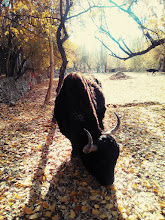Balti restaurants are often known in Birmingham as 'balti houses' ('house' here meaning not private residences, but, rather, 'establishment,' as in 'customs house' or 'public house'). Balti houses have a reputation as being inexpensive places to eat. In part, this is because they commonly have no alcohol licence, although customers who wish to drink are welcome[citation needed] to bring their own alcohol with them. The interior of a typical Birmingham balti house is traditionally simple, with early balti houses[citation needed] using newspaper as tablecloths. Some balti houses have a sheet of glass on the table top with menus secured underneath.[3] Balti houses often offer very large "Karack" naan bread pieces, meant to be shared by the whole table. .[4]
Balti houses originally clustered along and behind the main road between Sparkhill and Moseley, to the south of Birmingham city centre. This area (comprising the Ladypool Road, Stoney Lane and Stratford Road) is still sometimes referred to as the 'Balti Triangle' and contains a high concentration of Balti restaurants, as well as some of the oldest to be found in the city. One of the oldest established Balti Houses, N.Pasha's and M.Niam's K2 in the Birmingham B13 district of the Balti Triangle displays a large map of Baltistan on one wall.
On 28 July 2005, a tornado [5] caused extensive damage to buildings in the Triangle, forcing many restaurants to close. A clean-up operation ensured most had re-opened by the beginning of 2006.
Balti restaurants have now spread beyond the triangle, and are also based in the south of Birmingham along the Pershore Rd, The oldest Balti restaurant along the Pershore Rd is the Royal Watan Kashmiri Restaurant, it has been established for over 25 years and still under the same management. They are known for having the largest naan in Birmingham.Lye near Stourbridge to the west of Birmingham has become known as the 'Balti Mile' with up to a dozen restaurants clustered along the High Street.
The food and its style of presentation proved very popular during the 1980s and grew in the 1990s; Balti restaurants gradually opened up throughout the West Midlands and then a large part of Britain. The expanded curry market in Britain is now said to be worth some £4 billion annually; but some still claim that it is impossible get a 'proper' Balti outside the urban West Midlands.
Outside Britain, there are a small number of balti houses in Ireland. There is even one in Australia, appropriately named the Brum Balti, which reinforces its Birmingham ties by playing a non-stop selection of tunes by 1970s Birmingham soft-rock bands such as Electric Light Orchestra and The Moody Blues.
The Oxford English Dictionary teamed up with BBC-TV to run a series of programmes researching the origins of popular words, entitled "Balderdash and Piffle". One word which was analysed was 'Balti'. A menu from 1982 was cited as the first written reference, with The Curry Club's Curry Magazine Edition 29, winter 1984 answering a reader query about the definition of Balti. Written evidence seems to be scant prior to 1982, and the OED and The Curry Club welcome any contributions which will verify the first mention of Balti in Britain.
skip to main |
skip to sidebar

Search
Counter
| Provided by graphic design schools site. |
Popular Posts
- Election : Gilgit-Baltistan - 8 Languages, 10 Ethnic Groups, 6 Districts, 4 Religious sects - 24 National Assembly Seats !
- Gilgit Baltistan to attract investments in minerals sector
- Treks in Baltistan
- Gilgit-Baltistan governor Shama Khalid passes away
- History of Karakoram Highway
- Notable people
- BASHA DAM is just only for the NWFP & PUNJAB not for GILGIT-BALTISTAN
- Baltistan, The Land of Highest Peaks on Earth
- Everyone (POLITITION) thinks of changing the world, but no one (POLITITION) thinks of changing himself
- Flood kill 46 in Gilgit-Baltistan
Blog Archive
-
▼
2010
(42)
-
▼
January
(37)
- Are we self-responsible?
- Gilgit-Baltistan medical students’ quota increased
- The Imaginary Frontier
- Baltistan: Six Decades of Impasse
- Haji Ali - thoughts and hopes
- Rs12 billion set aside for uplift of Gilgit-Baltistan
- Investors urged to tap Gilgit-Baltistan gems
- Gilgit Baltistan prey great game
- Gilani announces development package for Gilgit Ba...
- Minerals in Baltistan
- Gemstones of Rs. 500 mln value extracted annually ...
- Gilgit Baltistan to attract investments in mineral...
- Baltistan - Skardu, Nagmah Valley, and Deosai Plains
- Election : Gilgit-Baltistan - 8 Languages, 10 Ethn...
- China to help Kyrgyzstan join Pakistan via Karakor...
- Why I have to go to the mountains – an attempted e...
- Gilgit-Baltistan package termed an eyewash
- Treks in Baltistan
- Peaks in Baltistan Pakistan
- Baltistan, The Land of Highest Peaks on Earth
- Baltistan's Tibetan Links
- Baltit Fort
- Righting the Wrongs in Ladakh-Baltistan
- Accessing Awe-inspiring Northern Areas From Islamabad
- A guide to the mineral localities of the Northern ...
- The polls in the Northern Areas.
- Subdivisions
- Autonomous status and present-day Gilgit-Baltistan
- History of Karakoram Highway
- Karakoram Highway
- Balti Houses
- Origins of the word balti
- Pop Culture References
- Notable people
- Geography
- Baltistan ( Introduction)
- Pakistan gem safari
-
▼
January
(37)
FEEDJIT Live Traffic
Followers
Review and Analysis

- Ayub_Balti
- Please contact us for any problems you have posting comments on this blog ! Thanks for spreading the word ! We are getting more and more visitors every day !
Infolinks
Facebook Badge
Copyright 2009
GILGIT BALTISTAN (GB). Powered by Blogger
Blogger Templates created by Deluxe Templates
Wordpress by Wpthemescreator
Blogger Templates created by Deluxe Templates
Wordpress by Wpthemescreator
No comments:
Post a Comment